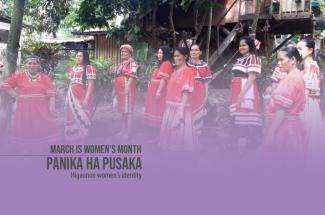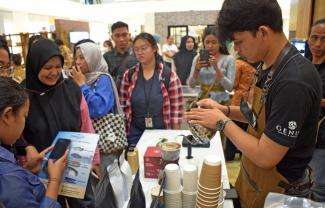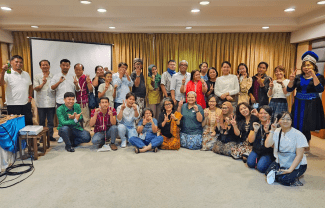Panika, the headdress of the Higaonon women, symbolises a sacred responsibility to champion their cultural heritage. Not any Higaonon woman can wear the panika. She has to make the commitment, and be recognized as a conduit of continuing the Higaonon traditions. Pusaka pertains to precious resources, both tangible and intangible, that remains in the Higaonon’s ancestral territories. Thus, Panika ha Pusaka[1] can be translated as women bearers of culture and values of the Higaonon. They chose this name to reflect the value of indigenous women, and use a term that is commonly known in the various Higaonon communities in Cagayan de Oro.
The Higaonon women face threats similar to other Indigenous communities, such as land grabbing and “red-tagging”, among many issues. One of the women shared that in their community, a hydropower project is again being reintroduced after 15 years. She worries about the negative feedbacks on the project; that is why personally, she is not supportive. Despite the Indigenous Peoples Rights Act in the Philippines, their right to give their free, prior and informed consent (FPIC) to projects is not fully respected. They said there is still high discrimination against indigenous women, and they have no political representation, such as in the local legislative body.
Members of Panika ha Pusaka have done small projects and participated in trainings and other initiatives individually. They wish that there will be tangible strengthening of more Higaonon women through their own organization. They envision that they will be able to bring back their cultural customs and practices. Thus, their purpose for doing their strategic planning.
One of their first priorities will be organizational strengthening. The women are confident that even without budget or funding, they will be able to commit to their regular meetings. They reflected that in the past they were already able to do this, which is also one of the reasons why the Higaonon women’s movement has sustained. One other matter close to their heart is livelihood development. They plan to pursue floristry because of the availability of flowers in their areas, and develop their food preservation skills. Thus, they will do skills-sharing among them to increase livelihood opportunities.
At the end of the day, the Higaonon women proudly wear their identity, not only through their cultural clothing, but through their determination and love for their people and ancestral domain. ###
[1] Formerly carrying the name Kagayhaan Ancestral Domain Higaonon Women Organization. Their current members come from the different barangays of Cagayan de Oro City, particularly from the Hinterland Barangays of Disrict 1 (Besigan, Tignapoloan, Dansolihon, Mambuaya, Bayanga, Lumbia, Tagpangi, Pagalungan, Taglimao, Tuburan, Pigsag-an, Tumpagon and San Simon), and 3 Brgys. From District 2 (Cugman, FS Catanico, and Tablon).




